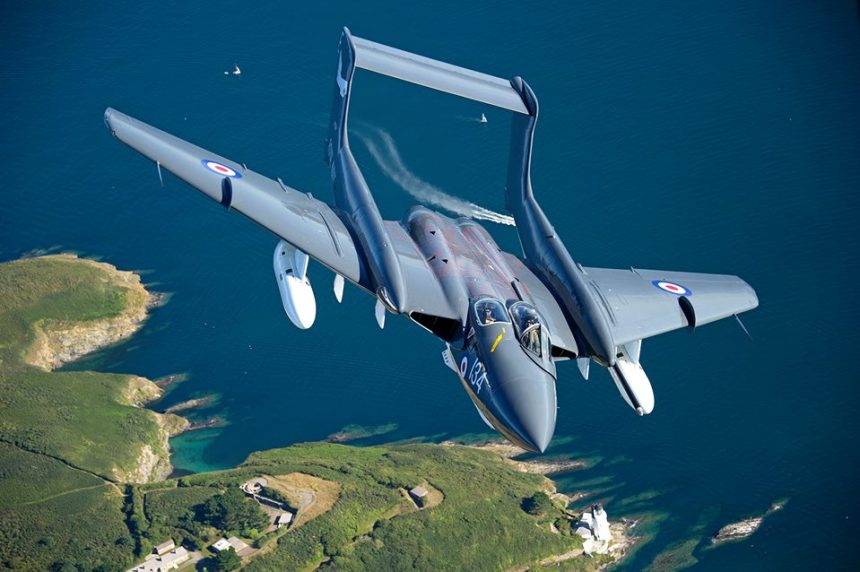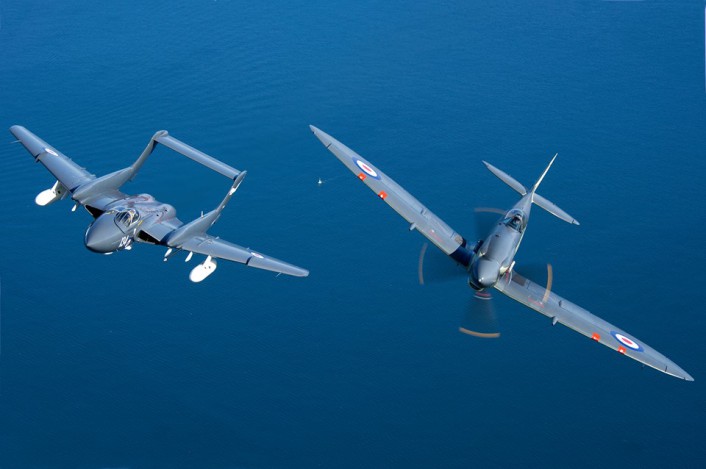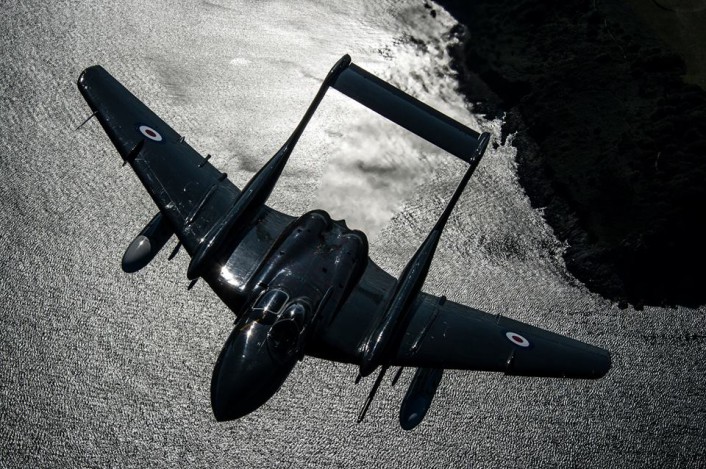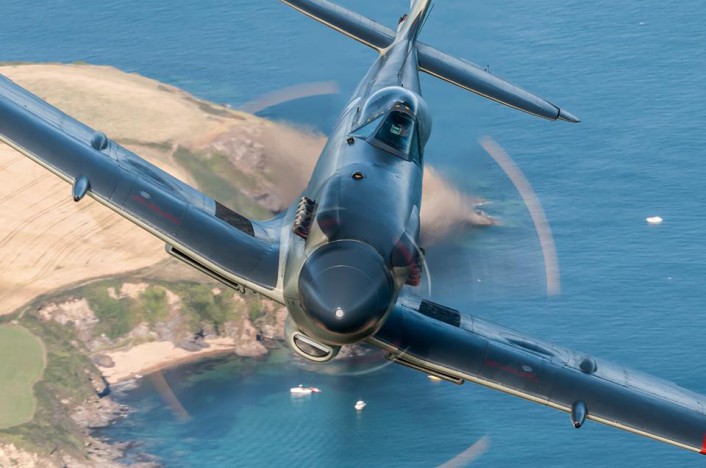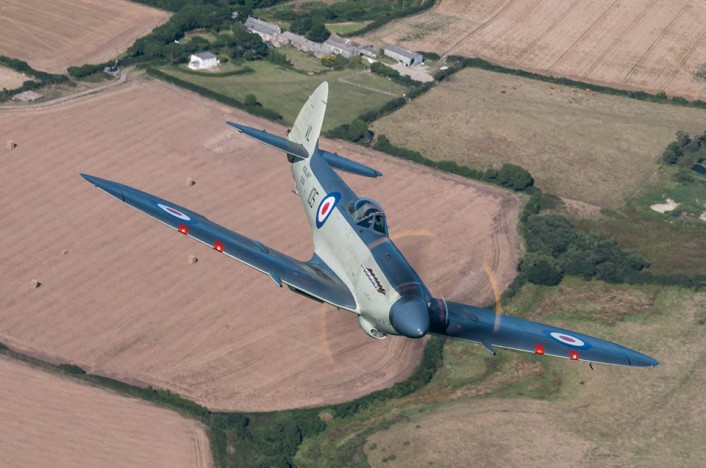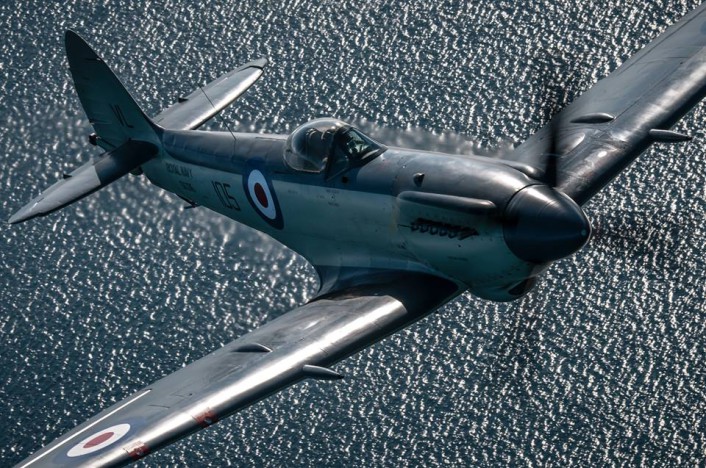Sea Vixen and Seafire as you have never seen them before!
The images in this post were taken by World famous aviation photographer Rich Cooper over the Cornish coastline, near Falmouth, during the RNAS Culdrose Air Day on Jul. 30.
They show two extremely rare privately owned aircraft: the sole flying examples in the world of a Sea Vixen FAW2 (G-CVIX/XP924) flown by Simon Hargreaves out of RNAS Yeovilton and Seafire Mk.XVII (SX336/G-KASX), flown by John Beattie.
Both planes represent important part of Fleet Air Arm (FAA), the branch of the British Royal Navy responsible for the operation of naval aircraft: the Supermarine Seafire was a naval version of the Supermarine Spitfire adapted for operation from aircraft carriers that flew from 1942 to 1950s; the de Havilland DH.110 Sea Vixen was a twin boom, twin-engined two-seat carrier-based fleet defence fighter that served from 1959 into the 1970s.
The shots were taken from Tony De Bruyn’s Skyvan as part of a photo mission with the Aviation PhotoCrew.
Image credit: RC-Pro Photography

